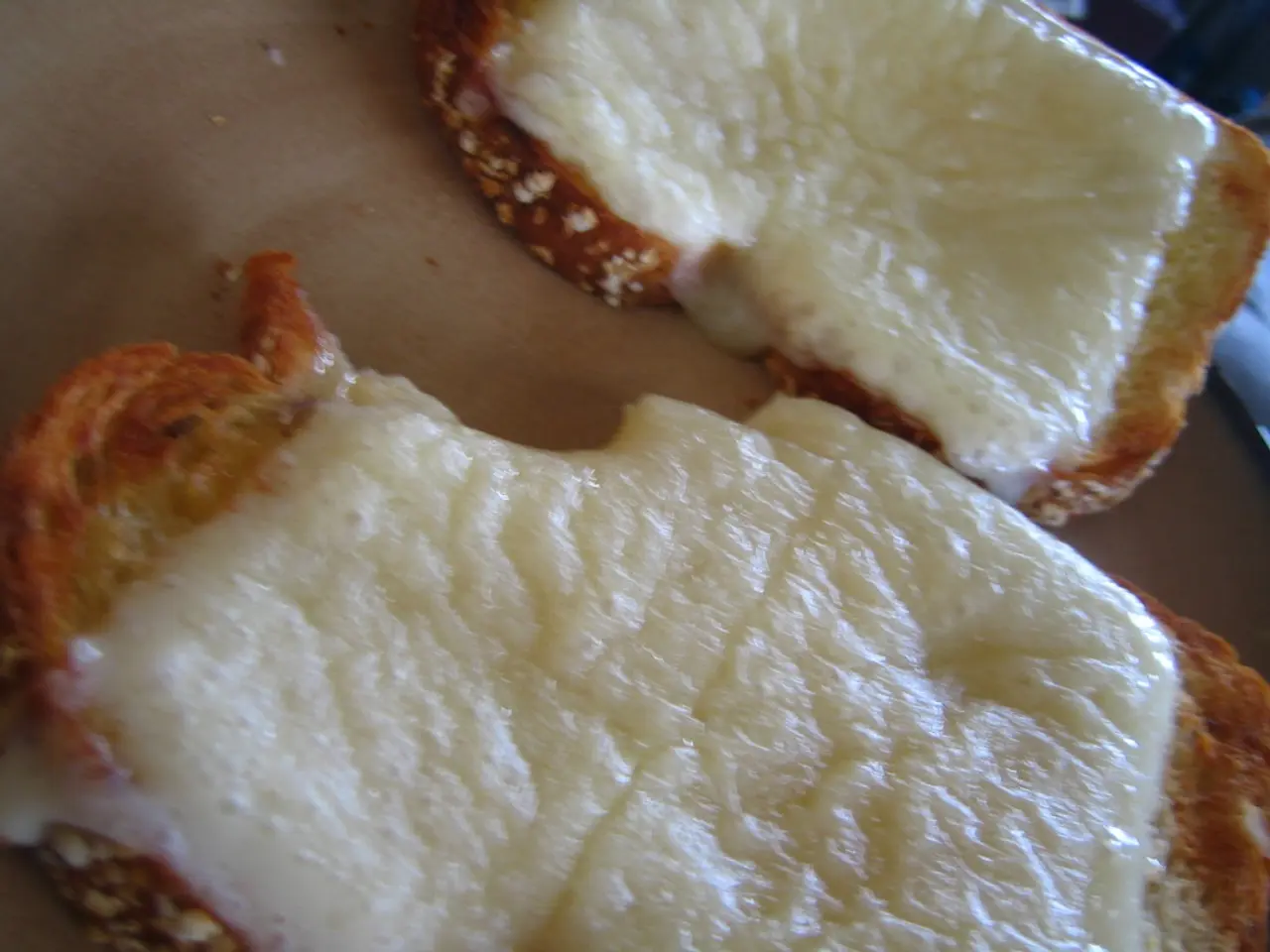Exploring the chemical makeup of croissants
In the world of food manufacturing, a new player is gaining attention – Transglutaminase (TGA). This enzyme, widely used in various industries such as meat, dairy, and bakery, is known for improving the functional properties of proteins[1][2].
TGA works by cross-linking proteins, enhancing texture, firmness, and yield. In the realm of baked goods, TGA is particularly beneficial as it improves 'crumb strength', making breads and pastries hold themselves together better[3]. This improved crumb strength also leads to dramatic improvements in puffiness, as seen in laboratory experiments with breads and croissants[4].
However, for individuals with celiac disease, the use of TGA in food products raises concerns. TGA plays a role in celiac disease pathogenesis by modifying gluten peptides to enhance their immunogenicity[1][4]. While the food industry primarily uses microbial TGA as a processing aid, which does not detoxify gluten nor render it safe for celiac patients, the enzyme's potential to increase gluten peptide immunogenicity remains a cause for concern[1][4].
The baking industry has put on hold their investigation of TGA use in baked products, underscoring the importance of a complete safety check before taking a new ingredient to the marketplace[7]. All new food ingredients in New Zealand, and Australia by extension, must be approved by Food Standards Australia New Zealand[5]. The potential risk of using TGA in food has been notified to the Food Standards Authority[6].
It's worth noting that TGA does not require as much usage as chemical additives to have the same effect. This property not only allows for a cheaper, more efficient manufacturing process but also reduces the amount of energy needed for dough mixing, saving commercial bakers money on their power bill[3].
Despite the concerns for celiac consumers, TGA is perceived as more 'natural' than some chemical additives by consumers[8]. However, it's crucial to remember that TGA is an enzyme that causes crosslinks in proteins and does not need oxygen to be effective[9]. This property can lead to 'side-reactions' where TGA may change some amino acids in proteins[6].
As with any new ingredient, taste-testing and consumer testing require regulatory approval. The potential benefits of TGA in improving the texture and quality of baked goods are clear, but its long-term safety and impact on celiac consumers remain uncertain[1][4].
In conclusion, while Transglutaminase offers promising benefits for the food industry, particularly in the baking sector, it's essential to approach its use with caution, especially for those with celiac disease. Until further research establishes its clinical safety for this group, it's advisable for individuals with celiac disease to continue avoiding products containing gluten, regardless of Transglutaminase treatment.
Science and technology have introduced a new player in food manufacturing, Transglutaminase (TGA), a versatile enzyme known for enhancing protein functional properties. In the realm of health-and-wellness and lifestyle, TGA is gaining attention for its potential benefits in fitness-and-exercise, as it Improves dietary nutrition by being a key component in healthy-diets and cooking, especially in food-and-drink items such as breads and pastries. However, therapies-and-treatments for individuals with celiac disease suggest caution in using TGA, as it may increase gluten peptide immunogenicity[1][4]. Recipes utilizing TGA must be thoroughly tested and approved before being introduced to the market[7], ensuring the safety of all consumers, including those following a healthy diet.




